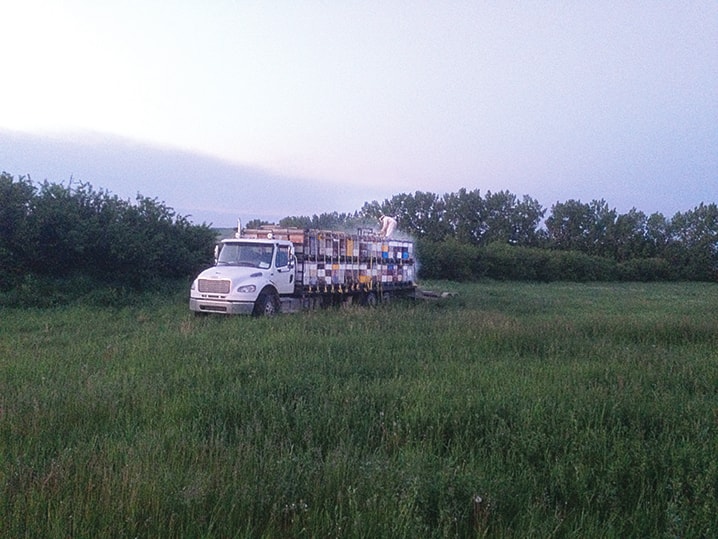It’s good vibrations humming from the 7,000 hives scattered around sites at Nixon Honey Farm outside of Innisfail.
The bees are healthy and prospects for the season are looking good, said co-owner and beekeeper Kevin Nixon.
“Losses over the winter are down compared to last year. It’s more normal,” he said.
Last year’s elevated number of bee deaths came from the long winter and rough spring, said Nixon, also the vice chair of the Canadian Honey Council. He noted the bees that hatch in October have to muster through the winter months and typically they live for only 30 days in the summer.
“The older bees were dying faster than the young ones were being born,” he said of spring 2013.
He attributes this year’s success to the high number of new queens they introduced to hives last year.
“We requeened so many last year. ... Typically we try to replace 40 to 50 per cent of queens per year.”
It’s the same story for Ryan Olthof, a beekeeper in Wetaskiwin County with 5,500 hives. He suffered a 23-per cent loss last spring but only 11 per cent this year, which is “really good” in the bee world, he said.
The plight of the buzzing winged creatures has been in the public eye for some time, with a high bee mortality rate reported from the Canadian Association of Professional Apiculturists in 2013 across Canada. Over the winter of 2012 to 2013, the average loss of honey bee colonies was 28.6 per cent, approximately double the acceptable level of 15 per cent.
In Alberta, 67,116 of the 282,000 bee colonies either died or were unproductive by spring 2013, a wintering loss of 23.8 per cent.
From 2006 to 2010, Alberta lost about 30 per cent every year, according to Medhat Nasr, the provincial apiculturist with Alberta Agriculture, an event that coincided with a bee colony collapse in the United States.
Investigations found varroa mites were the main culprits and a new product from France was brought in for better pest control, Nasr said, slicing the winter kills in half.
Meanwhile, concerns about the bee carnage specifically in Eastern Canada being linked to dust from corn insecticide and other pesticide use have been growing.
The Harvard School of Public Health recently released a study confirming bee colony fatalities are related to insecticides, especially neonicotinoids, which were banned in the U.K. in May 2013. This insecticide, introduced in Canada only about a decade ago, coats many corn and soybean seeds.
New guidelines for farmers to reduce dust when planting were developed by Health Canada’s pesticide regulatory agency and the makers of the seeds and are to be in effect this season.
But for Olthof and Nixon, pesticide and insecticide isn’t high on their list of concerns and Nasr said there have been no serious impacts reported in Alberta regarding the use of neonicotinoids.
“The losses that we’ve been seeing in the prairies do not seem to be pesticide-related. There have been a couple of isolated incidents but last year’s losses from everywhere north of Calgary were high and it seems to have been just the extended winter,” said Nixon.
“I try to convey a message of farmers, growers and beekeepers working together. Communication is key in pesticide application and so far they’ve done a great job communicating.”
Olthof, chair of the crop spraying and pollination committee with Alberta Beekeepers, said he hasn’t had any “noticeable losses” in his own business from hives being sprayed, whether it’s from a farmer or the county.
“That’s not to say there hasn’t been concerns. There was one report last year where an aerial applicator was not following protocol but the incidents are fairly few and far between,” Olthof said.
Nixon and Olthof say bee losses happen for a variety of reasons, including pests and diseases such as nosema.
They encourage farmers, counties, municipalities and the public at large to create pollinator friendly habitats along ditches or in gardens that will help the bee population as well.
rfrancoeur@www.reddeeradvocate.com
